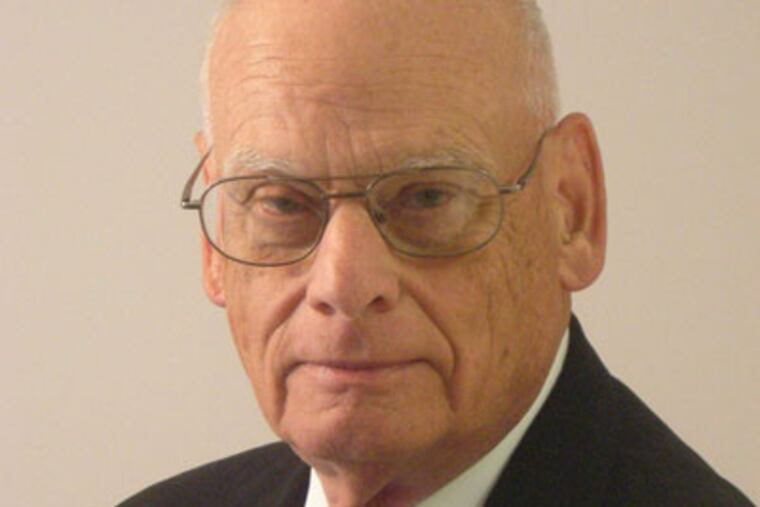Jack W. Boorse, 78, traffic engineer
The traffic engineering of Jack W. Boorse touched, among others, the legendary New Orleans trolley line made famous in the 1947 Tennessee Williams play, A Streetcar Named Desire. Mr. Boorse’s other work ranged far, with plans for light rail systems in Miami Beach, Kansas City, Mo., and Honolulu.

The traffic engineering of Jack W. Boorse touched, among others, the legendary New Orleans trolley line made famous in the 1947 Tennessee Williams play, A Streetcar Named Desire.
Mr. Boorse's other work ranged far, with plans for light rail systems in Miami Beach, Kansas City, Mo., and Honolulu.
But before them, his work focused on efforts closer to home, such as rerouting traffic during the years that the Platt Memorial Bridge, a key route to Philadelphia International Airport, was closed.
On Wednesday, May 9, Mr. Boorse, 78, chief traffic engineer for the Philadelphia Streets Department from 1983 to 1988, died of congestive heart failure at Penn Hospice at Rittenhouse.
Since 1988, he had become the principal professional associate for transport engineering in the Philadelphia office of Parsons Brinckerhoff, a global consulting firm dealing with infrastructure such as roads and bridges.
Mr. Boorse's career with Parsons began with a Baltimore project in 1988, his son Michael said Monday, and culminated in early 2012 with projects in Baltimore for the Maryland Transportation Authority. For the New Orleans streetcar project, Mr. Boorse conducted a "traffic capacity impacts" study of the streetcars.
"He was one of the people who had to design a route through downtown Baltimore" for the light rail line that runs toward the northern suburbs, Michael said. "It was the very first project for Parsons that he worked on," before the line opened in 1992.
He had an affection for the city, his son said, "because he had worked in Baltimore as a college student from Drexel" for the former Baltimore & Ohio Railroad.
Born in Philadelphia, Mr. Boorse graduated from Abington High School in 1950 and earned a bachelor's in civil engineering at Drexel University in 1956.
After serving in the Army in 1956 and 1957, he was honorably discharged because of the need for civil engineers outside the military and began his 31-year career with the Streets Department in 1957.
The traffic signs reading "Right Turn on Red" have been a given for a generation of Philadelphia drivers. In 1965, Mr. Boorse was a founding member and chairman of the Philadelphia Traffic and Transit Coordinating Committee, which helped make that concept a reality.
On that committee, his son said, Mr. Boorse was also "at the forefront of designing and installing, in cooperation with SEPTA," lanes for buses on Center City streets.
Even after he left the Streets Department, some of his work for Parsons dealt with Philadelphia, such as evaluating the efficiency of the Penn's Landing trolley.
Mr. Boorse was chairman for several years of the Subcommittee on Light Rail Circulator Systems of the Transportation Research Board, a private nonprofit organization.
Mr. Boorse was the author of Rapid Transit in Canada, published in 1968 by Almo Press, and Philadelphia in Motion, published by Bryn Mawr Press, in 1976.
In the 1970s and 1980s, Mr. Boorse was a board member of the Chinese Cultural Center and a member of the Chestnut Hill Community Association's traffic and transit committee.
He was one of the founders and a former president of the Metropolitan Philadelphia Railway Association and a member of organizations such as the American Society of Civil Engineers.
Besides son Michael, Mr. Boorse is survived by his wife, Gail.
A visitation was set from 10 a.m. Tuesday, May 15, at the Church of Our Saviour, Old York and Homestead Roads, Jenkintown, before an 11 a.m. funeral service there.
Contact Walter F. Naedele at 215-854-5607 or wnaedele@phillynews.com.